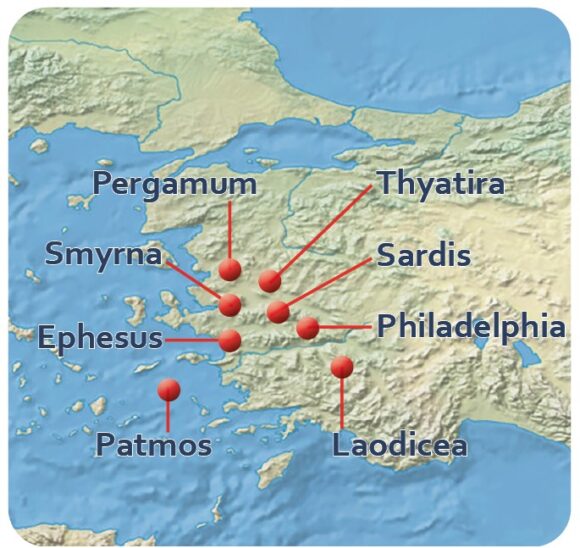REVELATION is a book of prophecies about the future, given by Jesus Christ to the Apostle John who wrote it down for the benefit of Jesus’ followers in his day and in all subsequent ages.
The revelation of Jesus Christ, which God gave him to show to his servants the things that must soon take place. He made it known by sending his angel to his servant John (Revelation 1:1).
The phrase ‘made it known’ means ‘signified’ (i.e., in symbolic form). For example, ‘heaven’ means the ruling powers, and ‘war in heaven’ refers to conflicts in human governments.
Revelation is also known as the Apocalypse —the Greek word ‘apocalypse’ means ‘to reveal’.
As the last of the divinely inspired writings, Revelation has many links with the first book, Genesis. The Bible begins with paradise in Eden and ends with paradise restored (Revelation 22). The prophecy is a ‘revelation’ of events affecting Jesus’ followers from the time of John, until Christ returns to be revealed in glory.
A Book of Symbol
Revelation is full of symbols, including many with which we may be familiar from the visions and prophecies of the Old Testament. It is given to us, not to provide precise dates for future happenings, but so that believers down the ages could be warned that cataclysmic events were about to happen, and be ready—and to give reassurance that all the while God is in control.
It may at first seem a daunting book. It often speaks in strange language; and yet much of its mystery is clarified if we refer back to earlier prophecies—particularly Daniel’s prophecies, and also the Lord’s Mount Olivet prophecy. In particular, many of the symbols in Old Testament prophecies—heavenly bodies, beasts, trees, etc.—reappear in the visions of Revelation; and we can generally assume that such symbols have a similar significance in this final prophecy.
The number seven appears many times in the book. Seven is often used in the Bible in the sense of completeness, and this is fitting as Revelation completes the Bible record.
A Prophecy for Us
As we read Revelation, we realise that this last book of prophecy, this last book of the Bible, is very relevant to our own times— and to us personally! The time is close when God shall ‘send the Christ appointed for you, Jesus, whom heaven must receive until the time for restoring all the things about which God spoke by the mouth of his holy prophets long ago’ (Acts 3:20–21).
Structure of the Book
The Apostle John was a prisoner on the Isle of Patmos when he received the prophecy at the end of the First Century ad.
Jesus’ first message is to seven congregations in the province of Asia (chapters 2–3), representative of his followers throughout the world.
According to the widely accepted ‘continuous historic’ interpretation of the book, the unfolding purpose of God is revealed to John in the following way:
- a seven-sealed scroll (chapters 6–8)— various stages in the Roman Empire until it becomes Christianised
- seven trumpets sounding warnings (chapters 8–11)—the overthrow of the Roman power: in the West by the Barbarians, in the East by Saracens and Turks
- seven bowls containing plagues (chapter 16)—aimed at the destruction of the Holy Roman Empire (West) and the Ottoman Empire (East).
Each of these seven-fold sections is introduced by a vision of God’s coming Kingdom, to which the events move forward relentlessly and in increasing detail.
In a separate but parallel sequence (chapter 17), world political and religious systems are depicted as frightening beasts which make war on the Lamb—the Lord Jesus Christ (John 1:29).
The events in the prophecy lead to the climax of the overthrow of all these systems by Christ at his ‘revelation’ (that is, his return), and the establishment of God’s Kingdom on earth (chapters 19–22).
Norman Owen
By kind permission of ‘The Christadelphian’
Some interesting links with other parts of the Bible:
- Revelation 1:7—see Daniel 7:13; Zechariah 12:10; Matthew 24:30.
- Revelation 11:15—see Daniel 2:44, 7:27; Zechariah 14:9.
- Revelation 22:18–19—see Deuteronomy 4:2; Proverbs 30:6.


